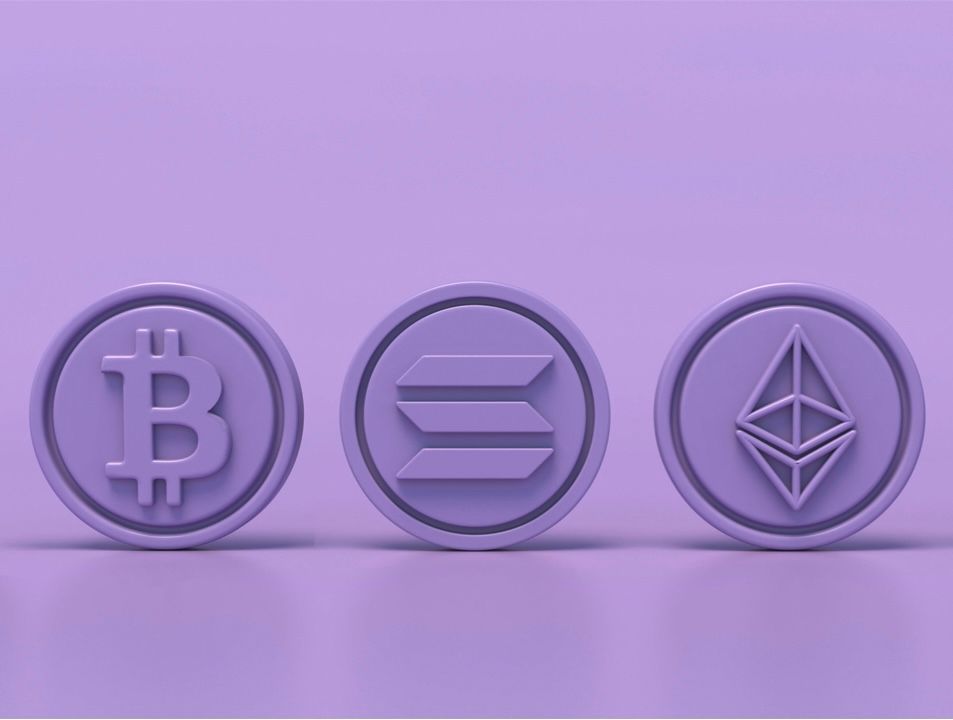Why Bitcoin, Ethereum, and Solana?
This article explains why Bitcoin (BTC), Ethereum (ETH), and Solana (SOL) are my largest cryptoasset holdings.

Disclaimer: None of the following is financial advice.
When evaluating cryptoassets, there are many metrics to analyze. This post will cover some of the most important — decentralization, revenue, marketing, inflation, institutional demand, and risk.
Decentralization
Cryptoassets were created so that no central institution (the government, big businesses, the Fed, etc.) could have control over your money and data. Decentralization is the key metric for analyzing risk in cryptoassets. The more decentralized a cryptoasset is, the more difficult it is to hack or shut down.
Centralization means that a cryptoasset or company is controlled by an individual or team. For example, Tesla motors is a centralized business that is largely controlled by CEO Elon Musk and other Tesla executives. Decentralization is the opposite. Ideally, there should be no CEO, no headquarters, no central server, etc.
Maybe add in a part about quantitative vs qualitative decentralization and that bitocin and eth are the best quant but btc is by far the best qualitiative.
Bitcoin is the best example of a decentralized cryptoasset. There are thousands of computers around the world running the Bitcoin software. If any of these computers were shut down, there are thousands more, each with a copy of Bitcoin’s data. Also, nobody knows who the founder of Bitcoin is and there is no executive team.
Many analysts use the number of nodes (computers running software for a specific cryptoasset) as a representation of decentralization. Using this metric, Bitcoin and Ethereum are by far the most decentralized.
But Bitcoin is much more decentralized than Ethereum in a qualitative sense. Ethereum has a known founder and “CEO” — Vitalik Buterin. If the government wanted to go after Ethereum, they could jail Vitalik and the Ethereum team. If the government wanted to go after Bitcoin, they couldn’t — there is no leader and there is no way to “shut down Bitcoin.”
Key Takeaways:
- Decentralization is a key metric for analyzing cryptoassets.
- Bitcoin and Ethereum are by far the most decentralized of all cryptoassets.
How do cryptoassets generate revenue?
Typically, when you evaluate a stock, you want to know their revenue and net income to get an idea of the fundamentals. Applying this to cryptoassets begs the question: how do cryptoassets make money?
Blockchains (cryptoassets) make money by selling block-space (transactions; space on the ledger). There are currently only 2 profitable cryptoassets: Bitcoin and Ethereum. ‘Proftiable’ means that they generate more income than they spend. This is an important metric for understanding the fundamentals of a cryptoassets. An unprofitable company or cryptoasset is unsustainable in the long run — they require outside funding to continue running. Investors should be wary of cryptoassets that are not profitable — but you can give some leeway to relatively new cryptoassets because, like a business, they require time to mature.
For more info on why Bitcoin will succeed and price prediction models, read this blog post.
Key Takeaway:
- Profitability is a key metric for analyzing cryptoassets.
- Bitcoin and Ethereum are the only profitable cryptoassets.
Why invest in Solana?
If Bitcoin and Ethereum are the most decentralized and profitable, why invest in Solana?
Solana has cleverly marketed itself as an Ethereum replacement. It is using this marketing and great user experience to take market-share (users) from Ethereum. If it succeeds, it could become larger than Ethereum in adoption and market cap. This makes Solana an attractive investing opportunity.
Solana’s marketing strategy
In the mid 2010s, the music industry changed completely. There was a boom in online sales of music instrumentals and beats for famous to amateur music artists to record on. In the online beat and instrumental market, there are popular music producers who get a lot of customers. These producers can charge a lot of money for their beats.
In order to compete, new producers use a simple strategy to try to undercut the incumbents. They charge less than the popular producers to attract customers and steal market share.
Ethereum is like the popular music producers. They charge a high price for “gas fees” (transaction fees) because they have so much demand.
Solana is like the new producer. It launched in March 2020 and is relatively new compared to Ethereum, which launched in 2015. They are currently charging low “gas fees” to grow their audience. Over time, they can increase their “gas fees” to become profitable.
Solana is also one of the fastest growing networks when it comes to number of nodes. In other words, Solana is becoming more decentralized over time.
Key takeaway:
- Solana is in prime position to replace Ethereum.
- Solana can become profitable and more decentralized in the future.
Inflation rates
Ideally, we want inflation below 2%. Some cryptoassets have higher inflation rates than US dollars (roughly 10–15%) — we generally want to avoid these. For example, a cryptoasset called XRP has had an inflation rate of 20%.
Bitcoin inflation
Bitcoin’s inflation rate is currently 1.88% annually. The inflation rate continually decreases every 4 years. In the year 2140, all 21 million BTC will be mined and Bitcoin will have a fixed 0% annual inflation rate.
Ethereum inflation
Ethereum’s inflation rate was initially 25% annually. It decreases over time and is currently 4% annually. There was recently a software update (EIP-1559) that introduced a mechanism that burns (deletes forever) a part of the fees that are paid to transact on Ethereum. If the fees remain high enough, Ethereum will be deflationary.
Solana inflation
Solana’s inflation rate is initially 8% annually. It decreases by 15% every year until it reaches a fixed 1.5% annual inflation rate around the year 2031.
Key takeaway:
- Low inflation rates are good.
- Bitcoin, Ethereum, and Solana will have some of the lowest inflation rates of any cryptoasset or fiat currency (US dollars, Euros, etc.).
Institutional demand
CoinShares’ weekly institutional investor report shows that there are 3 assets that consistently get institutional investment: Bitcoin, Ethereum, and Solana. Professional investors and institutions are buying Bitcoin, Ethereum, and Solana.
Tesla motors, Square Cash app, SpaceX, Tim Cook, Elon Musk, Peter Thiel, Ray Dalio, Cathie Wood, Chamath Palihapitiya, and David Sacks are some of the notable companies and people who invest in Bitcoin, Ethereum, or Solana.
Risk
One of the biggest risks for a cryptoasset is the risk of government regulation. Coins like XRP are the most risky for this reason. It is highly centralized and the SEC is currently suing its creators, Ripple labs.
Bitcoin is the least risky, mainly because it is the most decentralized. Ethereum is moderately risky. Solana is the most risky out of the 3, largely because it is the newest. All other cryptoassets are significantly more risky than these 3. Cryptoassets other than Bitcoin, Ethereum, and Solana are likely 10x to 1000x riskier because they do not have comparable decentralization, revenue, marketing, or inflation rates.



Comments ()